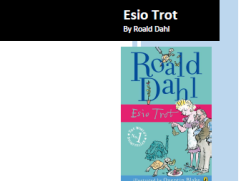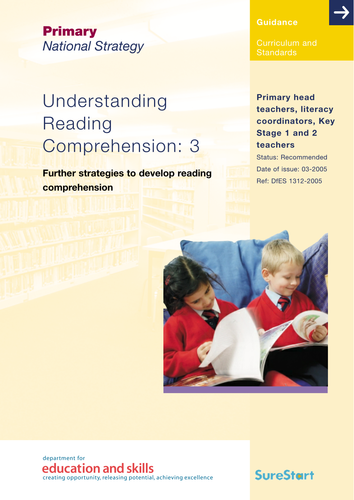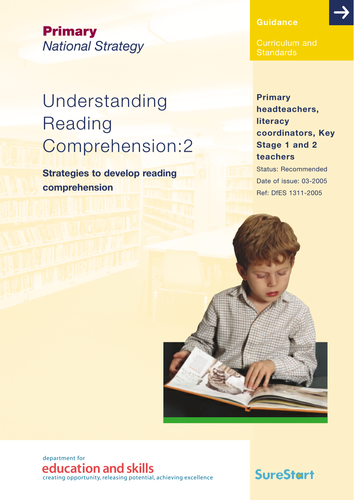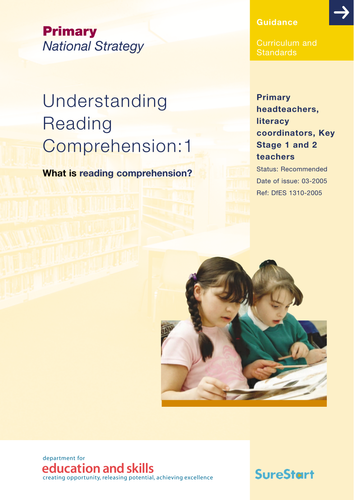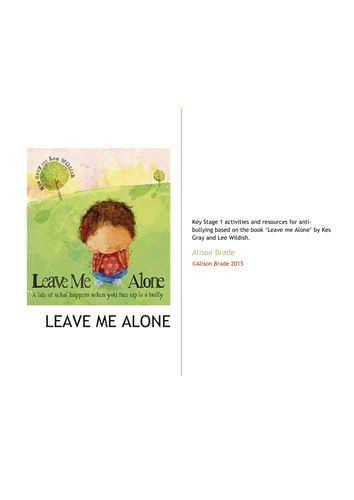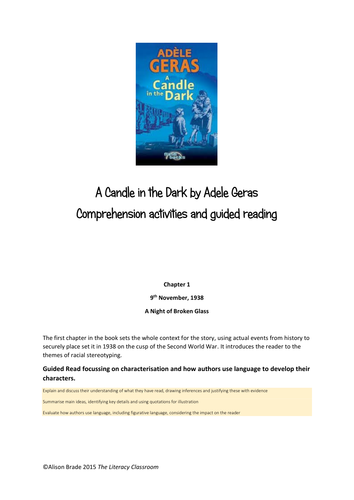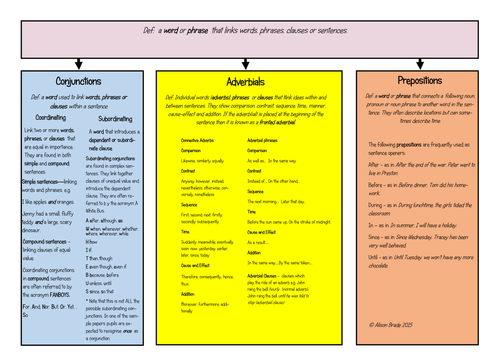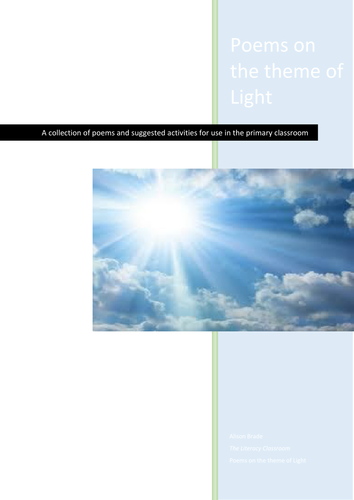
31Uploads
36k+Views
6k+Downloads
All resources

The Hodgeheg by Dick King-Smith Comprehension and Reading Activities
This is a 34 page PDF document containing the notes and resources for comprehension and reading activities relating to Dick King-Smith's The Hodgeheg. There are guided reading notes for each chapter, guidance for drama activities to develop children's understanding of character, differentiated worksheets to develop inference and justifying opinions with evidence and two crosswords to develop the skill of working out the meaning of words from the context.
The activities and materials are suitable for children in years 3/4

Esio Trot by Roald Dahl - Reading and Comprehension Activities
This is a 37 page PDF containing a range of activities and resources to support the teaching of reading and comprehension of Esio Trot by Roald Dahl. The activities are suitable for year 3 and some year 4 pupils. They include: 7 guided reads, 5 crosswords for vocabulary development, 2 sets of differentiated activity sheets for character analysis, activity sheets to explore plot structure and summary and activities to develop reading with expression. There are also suggestions for wider reading. Each of the activities are aligned with NC 2014 to enable tracking and the collection of evidence.

Understanding Reading Comprehension 3
The third comprehension document to support the national strategy. This particular one has some very useful information about how to develop children's vocabulary and their skills of understanding texts at 'word' level. The 2014 curriculum has an increased focus on this particular aspect of comprehension and the 2016 SATs also has an increased focus on word meaning.
It also suggests ways in which teachers can develop pupils understanding of character and theme as well as helping them make connections within and across texts.

Understanding Reading Comprehension 2
This is the second of the reading comprehension documents published to support the national strategy. With the increased focus on inference and vocabulary skills it is important that we revisit these documents. This one identifies the strategies that effective readers use to comprehend a text:the skills we need to teach children if they are to develop their comprehension. It also makes some suggestions about how to teach each of the strategies.

Understanding Reading Comprehension 1
This is the first of the Reading Comprehension documents that was published to support the primary strategy. With an increased focus on inference and vocabulary in the 2014 curriculum, it is important that we revisit these documents to understand what comprehension is and how we can 'teach' it.
As children learn to read they are able to decode the text by orchestrating a range of
cues. To become fluent readers they must also understand or comprehend what they
read. To help them do this they need to be taught a range of reading comprehension
strategies and be encouraged to reflect on their own understanding and learning. Such
an approach helps children go beyond literal interpretation and recall to explore the
complex meanings of a text using inference and deduction. They can begin to learn
these strategies from the earliest stages of learning to read.
This leaflet will help you to understand how readers make sense of what they read,
review the research evidence and suggest ways to teach reading comprehension
strategies.

Winnie in Winter: Comprehension questions and activities & resources to support SPaG
This pack includes a set of comprehension questions to be used for whole class discussion/guided reading, suitable for year 2. The majority of the question focus on content domain 1d allowing teachers to develop the necessary skills before the year 2 SATs. There is also a focus on 1a, vocabulary.
The pack also includes suggestions for developing pupils grammar, punctuation and spelling. In particular: adjectives, noun phrases, sentence structure, sentence types (commands), use of commas to separate words in a list, the apostrophe for omission and the homophones their, there and they're.
All the resources for the activities are included: worksheets, smart notebook file for sentence construction, a class set of 30 bingo cards for contraction bingo, cards for composing human sentences etc.

Comprehending and Analysing Character
These charts are designed to be used to support the teaching of comprehension. In particular, inference. Through the use of these sheets children are encouraged to compare characters, examine how characters develop through the course of a story, draw inferences about character's feelings etc., from the things they say/do and justify their inferences with evidence. All the charts can be used throughout the whole of Key Stage 2 and are also suitable for use in year 2.
The charts/worksheets included in this resource can be used alongside any piece of fiction.
They can be used with the whole class during shared reading; groups of children during guided reading or independently by individuals/groups of children.

Activities and Resources for KS1 anti-bullying based on 'Leave Me Alone' by Kes Gray
Some ideas for ant-bullying activities suitable for Key Stage 1 based on the book 'Leave Me Alone' by Kes Gray. The activities use the book as a stimulus to introduce this sensitive subject area. The activities focus on the characters in the book before broadening them out. It includes 2 powerpoint presentation resources to stimulate discussion of the key points in the story (or a smartnotebook alternative) and one worksheet for the children to complete.

A Candle in the Dark by Adele Geras Comprehension activities and Guided Reading
A Candle in the Dark by Adele Geras is a short historical novel set just before the beginning of World War II. It follows two young Jewish refugees as they escape Germany on the Kindertransport.
The pdf booklet provides a range of different activities to develop the comprehension of pupils in years 5/6 including, freeze frame, hot-seating, character on the wall.
There are detailed guided reading plans for 4 of the chapters which are Word documents enabling editing.
There is also a PDF which is a SATs style comprehension paper for the final chapter.
Each of the activities is cross-referenced to the end of Key Stage 2 statements for reading to facilitate the gathering of evidence for end of Key Stage 2 Teacher Assessment of Reading.

What are connectives called in the new National Curriculum?
Are you confused by the terminology in the New National Curriculum? The fact that the term 'connectives' is no longer in the National Curriculum, has caused a great deal of angst and confusion for many teachers. This chart identifies what 'connectives' are now known as in the NC English 2014. It provides definitions and examples on a single sheet of A4 and is an at a glance prompt sheet for busy teachers.

Poems and activities on the theme of light for primary school
This is a pdf document. The document contains a collection of poems on the theme of light, suitable for use in the primary school. The poems are categorised according to the age group they might be used with. Each of the poems has suggested activities that can be carried out by the children, ranging from singing/performing the poems in reception to the study of figurative language in years 5 and 6. From year 1 through to year 6 there are suggestions as to how the children might go about composing their own poems using a range of poetic devices and figurative language using the selected poems as models.
The poems written by the children could then be used as a whole school poetry celebration which might take the form of an assembly, an anthology of poetry or a display.
The theme for National Poetry day 2015 is 'light' .


